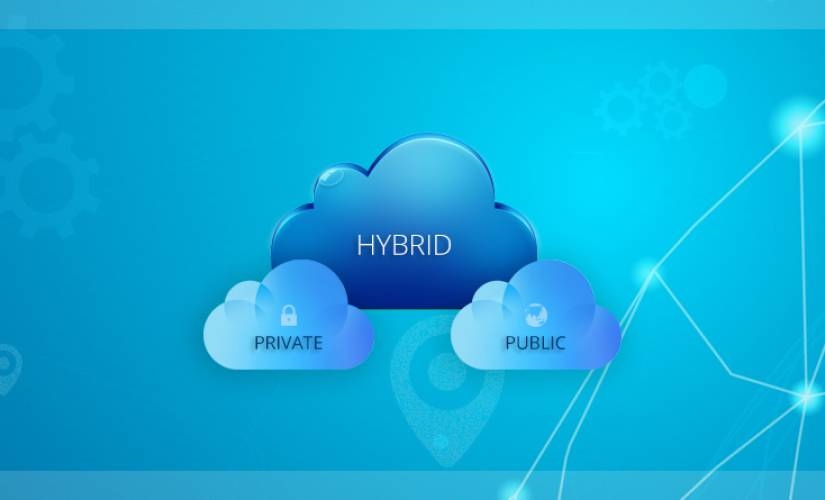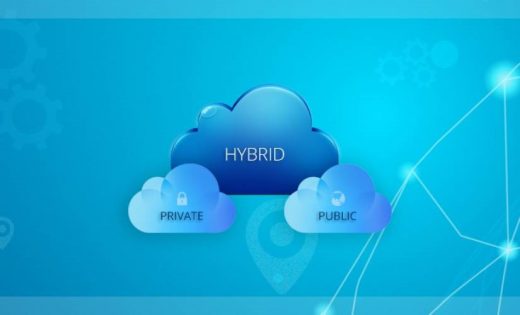Hybrid Cloud Solutions – The Future of Enterprise IT
Hybrid Cloud Solutions – The Future of Enterprise IT

Cloud computing is a technological revolution in progress and has been emerging as one of the most reliable paths for business innovation. Facilitating businesses to be more agile and responsive to the dynamic conditions and opportunities; cloud computing propels productivity growth and widens profit margins. Hybrid cloud solutions are the future of enterprise IT.
The adoption of disruptive technology is advancing in this era of cloud computing. It is clear that companies are unlocking new sources of productivity, collaboration, flexibility, and performance improvement.
From on-demand network access to scalability and greater security, the actual value of cloud computing catapults enterprises into a new dimension of competitiveness. Cloud computing can transform the way organizations approach operational issues.
Cloud solutions will combine with the next wave of intelligent technologies. Solutions in cloud computing will enter the Internet of Things (IoT), Blockchain, Big Data, Machine Learning, and Artificial Intelligence (AI).
Cloud computing solutions have become the new norm for enterprises. The latest Gartner report points to the fact that this differentiated technology will continue to make headway in the technological landscape.
As we look ahead, it is clear that some definitive trends are floating around cloud computing. Hybrid cloud is assumed to represent the new norm of enterprise computing. We are resolving the binary paradigm of cloud infrastructure by leveraging the best of both worlds. As we see, the hybrid cloud strategy is poised to dominate the industry moving forward.
What is Hybrid Cloud Computing?
According to the National Institute of Standards and Technology, hybrid cloud is defined as:
“ composition of two or more distinct cloud infrastructures (private, community, or public) that remain unique entities, but are bound together by standardized or proprietary technology that enables data and application portability.”
Every hybrid cloud model is different in its structure and layout, as it is devised to meet the unique needs of an enterprise.
Hybrid cloud is a complete cloud solution that can be leveraged to combine the high-security attributes of private cloud. The easy-to-access features of public cloud is so that it caters to a diverse range of use cases and complex deployment scenarios.
Leveraging both sides of the equation, a hybrid cloud infrastructure creates a unified, automated, and well-maintained computing environment for business. The well-maintained environment would ensure greater flexibility in moving workloads between different cloud solutions according to the dynamic needs and fluctuating costs.
Why Hybrid Cloud?
Architecting a hybrid cloud enables organizations to tap advantages of public and private cloud deployments simultaneously. However, its main value lies in facilitating digital business transformation by gaining agility.
Organizations often find it challenging to choose between deploying applications on-premises and public cloud.
In most cases, companies continue to maintain their data centers for ensuring security, compliance, and operational control. Nonetheless, enterprises are always in need of more resources.
For instance, your organization may need additional computing and storage resources to meet the occasional demand spike. Then the business can scale back to the original in-house servers when demand subsides.
Restricting your cloud computing infrastructure to the boundaries of your private data centers doesn’t seem a sensible choice. Demand on business resources and the lagtime this creates will require a public cloud service to access as many resources as needed.
Integrating a public cloud service into your existing IT strategy not only ensures an affordable solution for processing high-volume data spikes but also helps in avoiding costly downtime.
Top Use Cases of Hybrid Cloud.
As we look at some of the top benefits of hybrid cloud solutions, the answer to “why choose hybrid cloud?” becomes well-defined. Hybrid cloud offers the best disaster recovery option along with an easily-accessible private infrastructure.
Deploying a hybrid cloud solution allows an enterprise to pick out their applications, data, and resources that can be put in the public cloud or a private environment. In most cases, critical and sensitive data is being stored in a data center, or private cloud deployments, whereas a public cloud, will be used for less risky resources.
A resource that will allow organizations to reap the benefits of speed and flexibility of the cloud without having to replace their entire IT infrastructure is quickly becoming essential. Furthermore, the cloud can be a disaster recovery approach with an efficient route to protect critical applications.
In the world of IT infrastructure, agility and flexibility is the need of the hour. Organizations, regardless of their size and niche, should be able to respond to the changing business and customer demands efficiently. Hybrid cloud approach empowers enterprises with an unprecedented level of flexibility.
Hybrid cloud can optimizes the use of computing, storage, and networking resources. Nurturing greater IT and business collaboration, a hybrid cloud strategy creates an environment that can be scaled up or dialed back as your business needs grow and change.
Reducing your total cost of ownership, hybrid cloud provides the added benefit of being cost-effective. Disaster recovery options, cloud bursting and several other attributes of hybrid cloud environments enable organizations to reduce costs.
Switching the IT spending to hybrid cloud’s pay-as-you-go model reduces capital expenses (CapEx) to a greater extent. Not only this cloud strategy matches your cost patterns to demand patterns, but also support current and future growth seamlessly.
Increasing demand for scalability, efficient productivity, and secure data access leads to the growing adoption of hybrid cloud solutions. The rising popularity of big data management tools, artificial intelligence (AI) and the Internet of Things (IoT) also acts as a growth catalyst.
According to a report published by Allied Market Research, “the global hybrid cloud market is projected to reach $ 171,926 million by 2025, growing at a CAGR of 21.7% from 2018 to 2025.” Big cloud and IT players like Microsoft Corporation, Amazon Web Services, VMware, Rackspace, Hewlett Packard Enterprise, IBM, and Google LLC have been operating the global hybrid cloud market.
The transformative role of Hybrid cloud.
Hybrid cloud architecture tackles the issues raised by several businesses for embracing public cloud. Regulatory compliance, data privacy, and jurisdiction requirements will have to be met. Businesses of all scales and industries can leverage hybrid cloud solutions to bring application services and data together to gain a significant foothold in the competitive market.
Complete operational consistency and seamless workload portability of hybrid cloud strategies provide the freedom and flexibility to innovate faster and seize opportunities. Companies operating in finance, healthcare, and legal sectors feature particular regulatory requirements and information management standards.
Moreover, many applications and services in these industries follow a legacy infrastructure being in place for decades. Extending the existing legacy system or rewriting an entire application would be costly and complicated.
Hybrid cloud strategies allow enterprises to avail the most cost-effective and innovative solutions without incurring a large capital outlay of moving to a full cloud environment.
How to Implement?
The first step towards cloud implementation lies in understanding the business value and use cases where hybrid cloud can be leveraged. Several factors have to be taken into consideration while implementing a hybrid cloud in any organization.
However, the following seven steps are more universal for any cloud implementation process.
- Determine the cloud deployment model for applications and data.
- Integrate with existing enterprise services.
- Address connectivity requirements.
- Develop governance policies and service agreements.
- Assess and resolve security and privacy challenges.
- Manage the hybrid cloud environment.
- Consider a backup, archive, and disaster recovery plan.
Organizations choosing a hybrid approach can achieve financial and operational advantages. You must provide a plan early for creating a thoughtful migration plan.
Challenges
Hybrid cloud computing is a valuable solution that delivers improved user experience, increased resiliency, and greater flexibility. Like any other emerging technology, it comes with a fair share of challenges and issues.
The top challenges faced by the organizations include security risks, compliance issues, integration complexity, components partitioning, and scaling complications. However, the good news is that all of these issues and complexities can be addressed with a well-planned strategy.
Partnering with a managed service provider helps in making smarter choices and mapping out a successful cloud strategy.
Conclusion
We can say that the versatility and flexibility of hybrid cloud strategy will dominate the industry moving forward. As the hybrid cloud adoption becomes mainstream, enterprises need to perceive its full potential and address the unique complexities to derive its substantial benefits.
The post Hybrid Cloud Solutions – The Future of Enterprise IT appeared first on ReadWrite.
(37)


